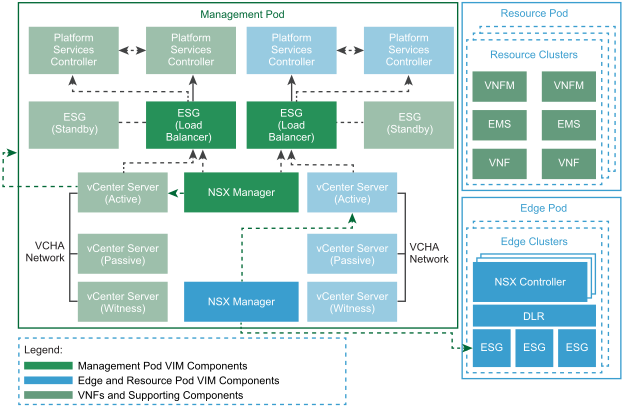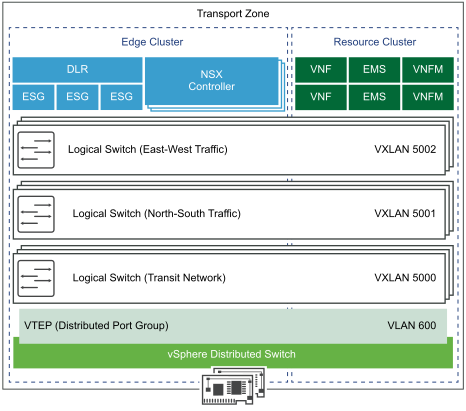The second NSX Manager in the Management pod is associated with the vCenter Server instance that manages the Edge pod. CSP network administrators use this instance of NSX Manager to operate tenant network services. Tenants must coordinate their connectivity needs with the administrator during VNF onboarding.

For VNF Components that require East-West connectivity, the CSP network administrator uses the same NSX Manager to create VXLAN backed logical switches that are extended to vCloud Director as external networks. Tenant administrators connect VNFs to these networks to create communication channels between the VNF Components.

CSPs manage compute and memory resources of edge devices by placing them in dedicated tenant resources pools. These resource pools allow for fine grained resource partitioning, allocation, and reservation to the tenant edge device.
Different routing scenarios are detailed in the VNF Onboarding in Three-Pod Design section of this document. These scenarios address connectivity between VNFCs inside of a VNF, connectivity between different VNFs, and connectivity between VNFs and their management components.
Since CSP network administrators have direct access to NSX for vSphere, they can leverage advanced edge services such as distributed logical routers (DLRs) to handle additional network functions including: VXLAN to VLAN bridging, efficient routing between VNF networks across VNFCs and VNFs, distributed firewalls, and redundant routing protocol using ECMP. The logical routing design is based on per VNF requirements and should be decided as part of the onboarding process.